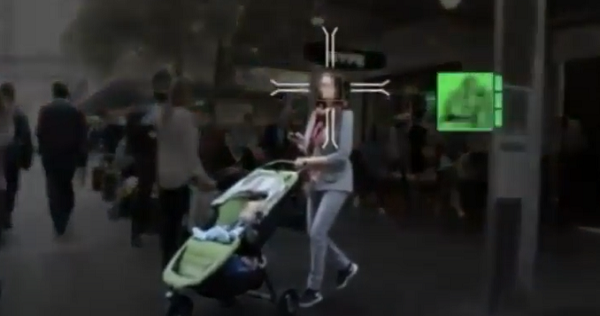
The pointed and ugly phrase of facial recognition technology escaped the armored Faraday cages of experimental laboratories, and the obligatory invasion of totalitarianism regimes, once a social network released the prying software suite to allegedly enhance the community experience. Unbeknownst to US F***book customers, the image identification engine interfaced with personal accounts was launched in 2017, forcing users wishing to opt-out of the controversial and invasive powerful Big Brother feature to undergo an arduous and blood curdling journey to attain autonomy. The machine learning software app was one of the first of its kind to be released on a such a mass scale, a novel generation of smart programming that could see the world and recreated reality through ingrained programming. However, along with the ground breaking technology, came a tidal wave of practical issues, concerns, and opportunities with devious pretenses.
The European Union was so wary of the cavalcade of logistical and legal nightmares due to the existence and instantaneous gaping hole of security breaches appearing with the onset of the spy-grade technology, that threats were made to Zuckerberg and staff that there would be zero tolerance for imaging protocol hitched to user accounts, unless it was made patently obvious to individuals attempting to deactivate the service. The EU did not wait for the Silicon Valley response and in May of 2018 threatened monetary sanctions, by unleashing strict policy addressing privacy concerns and opt-out procedure for the entire gamut of internet ventures. The sentiments and efforts of Europe’s nanny state, however, were ineffective in counterbalancing the recklessly boisterous atmosphere of the online community spreading to the North American continent, as the loopholes created by the technology, led to horrific consequences exploited by hackers and fake profiles. Engaging a motivated dragon possessing inexhaustive funds in the courtroom is no easy task.
In the aftermath of the European failure, verifying the identity of a stranger within the internet realm through the backend code of F***book enabling searching parameters not even available to certain government organizations, became as easy as posting a photo onto a timeline, by simply allowing the programmed bots to match names with the faces. The disturbing widespread selections of low-grade stalking options conveniently made available with a touch of the fingertips, marked a rather dubious indictment as to the future and overall place for facial recognition intelligence among social networks. The vigilante response was to create generalized facial compiling a group of faces to trick the software. Opportunists saw a much larger prize.
While the keystone cops social network security goon antics of the omnipresent surveillance pathogen outbreak devolved into a money laundering scheme exchanging personal data for untraceable Bitcoin currencies, the hotly contested race of monopolizing AI-infused spyware has transcended the information processing of a vapid timeline photograph. Brought to the forefront of this pending cluster screw are the defense lobby and the limitless financial resources of joint ventures, a partnership that is worth exploring in the minefield of the current health crises propaganda stifling reason. Commercialized facial recognition capabilities are merely the bridge and the beginning in the lightning speed evolution of machine learning applications changing the way the reality is defined and opening up opportunities.
Over the last three decades, humanity has witnessed the expansion of the concept of reality from personal life experience, to the supplement of an online persona, and in the latest opening of a mysterious portal, the advent of a machine learning construct. The levels of complexity and contradiction rival the geeked out and tedious director’s cut of Inception meets the Matrix.
As Covid-19 virus has recalibrated the collective perspective on life, the previous systems of values and morays impulsively discarded, shock should be the most remote Greenland outpost of a response to the desecration of ethics. Instead, harsh cynicism should reign in the wake of the sordid partnership between the military industrial complex and the venture capital funding channels controlling tech in developing battlefield applications relating to projects that exceed the naïve and trivial act of waving at camera with a smile. The ugly cultural experiment of social distancing, and the subsequent cattle prod shaming of liberal dogma is soon to be replicated through innumerable lines of code holding the essence of an individual’s identification hostage, as well as the vehicle and the home. Controlling the flow and interpreting information captured by the sensory tools of a smart software entity is a game changing venture, especially within the “all eggs in one basket” approach to bundling automated software services.
Even though F***book is responsible for any unforeseen consequences thanks to a busines model which adheres to the amount of grants received indirectly from government agencies, the interloper of DARPA is now involved in aggressive and hardcore research applications beyond the limited scope of rendering ungracious selfies. While assisting with the wry attempt to redefine the parameters of warfare, the defense advanced research project consortium has surpassed the flirtatious innocent phase of hand holding in potentially weaponizing the direct descendants of the facial recognition social media app. The relentless think tank of the US military has even gone as far as to collaborate with Fortune 500 world renowned computer chip manufacturer Intel, in drafting the Sun-Tzu sensible nuanced complexities and missive of aggression and counter-measures dictating the augmented reality combat theater. The collaboration of designing a formidable yet highly volatile computer chip functioning within a largely unexplored reality is a chilling proposition.
Not surprisingly, anti-virus monarch and cyber-renegade, John McAfee, the tenuous and venerable parallel to Andy Dick killing the raucous atmosphere of an underground trendy warehouse rave scene upon arrival (DOA), interjected impossibility into an already foreboding tale of horrific desolation. Financial indiscretions and championing cryptocurrency aside, as truth is savagely drugged and dragged into the nucleus of contradictions, which may or may not include a barbiturate buffet supervised by Mr. Dick within the silent ruins of an abandoned textile factory in Fontana, the basis for what is real, and what is not, remains obscured by virtual fantasy. Human perceived reality now shares the crowded limelight with the reality and persona of the internet, and the construction of machine to machine reality in its nepionic stages. McAfee’s company, has engaged in a concerted effort to decipher and identify how AI models interact with carbon-based stimuli, and the possible startling ramifications of hacking originating from an external source. Their successes in manipulating machine learning apps has caught the attention of some pretty powerful people, as the wide proliferation of smart systems continues.
If the retched email campaigns of Nigerian fraud artists is the garden variety first level of hacking, the intrinsic elaborate menace to the dreamland of machines represents forever.

To humans the speed limit read 35, but to AI devices in self-driving vehicles this is interpreted as 85.
With the sum total of the compiled external distractions driving the research of sensory perception infrastructure and security protocols, DARPA and private entities are experimenting with layers of reality altering scenarios to combat security issues that are impervious to traditional software defenses. This is in direct response to the presence of methods aimed to fool sentient digital systems, a battle cry for a full charge at the enemy. As smart technology is programed to process and evaluate a digital construct of reality, security vulnerabilities exist within a realm that lacks matter and substance from a physical perspective. It’s bad enough that AI models are capable of evaluating the world within the online platform, but now there exists a direct campaign to change the metaphor of the reality landscape to deliberately include content for the purpose of deflection. A tech-evangelist group under the tutelage of McAfee recently edited a speed limit sign in the digital matrix to read “85” instead of “35”, prompting a Tesla self-driving vehicle into accelerating 50 mph past the posted speed. The bold move orchestrated by the collection of innovative dissidents is an illustration of just how critical it is to further the understanding of how smart software and computers interpret the world viewed from sensors and software for the sake of the future.
Implied reality can be very difficult enough to interpret, and with the existence of smart software battles on another plane of existence muddying the waters of clarity and reason, the smart thing to do is buckle up for a wild ride. This plausible logistical disaster simply cannot be taken on face value alone, a lesson that the social networks are still learning the hard way.